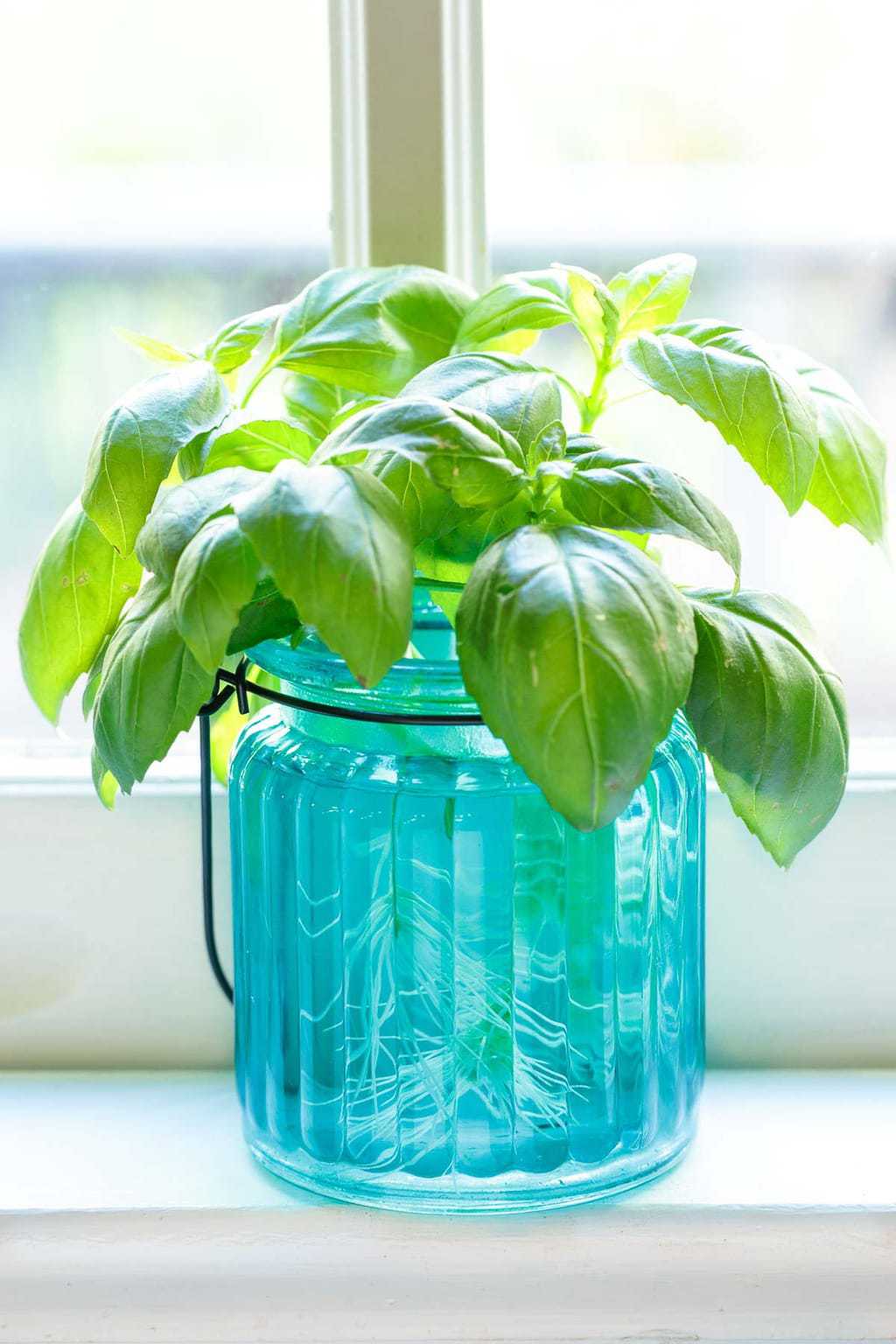How to Root Basil from Cuttings
5.0
(4)
Your folders
Your folders
Prep Time: 20 minutes
Total: 20 minutes
Servings: 12
Cost: $1.00 /serving
Author : Chris Scheuer

Ingredients
Export 3 ingredients for grocery delivery
Instructions
Step 1
With a scissors or a sharp knife, cut 3-4 inch long cuttings (they may end up being a bit longer depending on where the first leaf node is) right below a leaf node; this is where a leaf joins the main stem. Although your little cuttings will eventually sprout roots all the way up the stem, the leaf node is generally where the new shoots will begin.
Step 2
Remove leaves from cuttings on the lower 2 inches. (I place any basil leaves that are left over in a small plastic storage container and store them in the refrigerator till I need them for cooking.)
Step 3
If there are tiny leaves at the leaf node, don’t worry about these, they can stay on.
Step 4
Place cuttings in small glass containers of water on a bright windowsill. Choose an area that gets lots of light, but not direct sun, as the little plants could go into shock at this point with hot sunshine. You can put 4-6 cuttings in each glass. The cuttings might wilt a little at first and you may lose a few, that's normal. You should have plenty that survive.
Step 5
Watch the water levels carefully, adding water to keep stems immersed. Change the water every other day to keep it fresh. (Be sure it's not too cold on your window sill. Basil loves warmth and doesn't do well if it gets a chill.)
Step 6
After 5-7 days you will begin to see some tiny white roots forming. Every day more and more will appear. Let the roots grow to about 2 inches. Continue to change the water every other day. The process will take 12 days to 18 days, from start to finish.
Step 7
You are now ready to plant your plants outdoors in a sunny spot with good drainage. Keep the plants protected from intense sun for a week or so until they get established. Once they adjust, the little plants will start growing new leaves and shoots. Before you know it, you'll have an abundance of fresh basil!